| Imperial Order of the Rose | |
|---|---|
 Imperial Order of the Rose, Officer | |
| Awarded by the Head of the Brazilian Imperial Family | |
| Type | Dynastic order |
| Established | 17 October 1829 1829–1890 (National Order) 1890–present (House Order) |
| Royal house | Orleans-Braganza |
| Motto | AMOR E FIDELIDADE (Love and Fidelity) |
| Grand Master | Disputed:[1] Prince Bertrand of Orléans-Braganza Prince Pedro of Bourbon of Orléans-Braganza |
| Grades | Grand Cross Grand Dignitary Dignitary Commander Officer Knight |
| Precedence | |
| Next (higher) | Imperial Order of Pedro I |
| Next (lower) | none (lowest Order) |
Ribbon bar of the order | |
The Imperial Order of the Rose (Portuguese: Imperial Ordem da Rosa) was a Brazilian order of chivalry, instituted by Emperor Pedro I of Brazil on 17 October 1829 to commemorate his marriage to Amélie of Leuchtenberg.
On 22 March 1890, the order was cancelled as national order by the interim government of First Brazilian Republic. Since the deposition in 1889 of the last Brazilian monarch, Emperor Pedro II, the order continues as a house order being awarded by the Heads of the House of Orleans-Braganza, pretenders to the defunct throne of Brazil. The current Brazilian Imperial Family is split into two branches Petrópolis and Vassouras, and as a consequence the Grand Mastership of the Order is disputed between those two branches.
History
It was designed by Jean-Baptiste Debret, who, as discussed by historians, would have been inspired by the motifs of roses that adorned Amélie's dress when landing in Rio de Janeiro, or when marrying, or in a portrait of the same envoy from Europe to the then Emperor of Brazil.
The order rewarded military and civilians, national and foreign, who distinguished themselves by their fidelity to the person of the Emperor and by services rendered to the State, and carried a number of degrees superior to the other Brazilian and Portuguese orders then existing.
From 1829 to 1831 Emperor Pedro I granted only 189 insignia. His son and successor, Emperor Pedro II, during the second reign, got to grace 14,284 citizens. In addition to the two emperors, only the Duke of Caxias was order-great during his term.
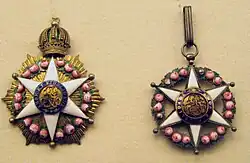
One of the first winners received the commendation for services rendered during an accident with the Brazilian imperial family: the small history of the court tells us that on 7 December 1829, newly married, Pedro I returned with the family of the Imperial Palace of São Cristóvão, in Quinta da Boa Vista. Like his favorite, he personally drove the carriage when, on Lavradio Street, the tow line was broken, and the horses became frightened, breaking the reins and driving the vehicle, dragged dangerously. The Emperor fractured the seventh rib of the posterior third and the sixth of the anterior third, had bruises on the forehead and dislocation in the fourth right, losing his senses. He had barely recovered them when he was picked up at the nearest house by the Marquis de Cantagalo, Joao Maria da Gama Freitas Berquó. According to the Bulletin on the Disaster of Her Imperial Majesty published in the Jornal do Commercio, Empress Amélie was the one who demanded the least care: "she did not have any sensible damage except the shock and the fright that such disaster should cause her." The Emperor's eldest daughter, the future Queen Maria II of Portugal, "received great bruising on the right cheek, comprising part of the head on the same side." Auguste de Beauharnais, Prince of Eichstätt, Duke of Leuchtenberg and of Santa Cruz, brother of the empress, "had a luxation in the ulna of the right side with fracture of the same one". Baroness Slorefeder, assistant of the Empress, "gave a very dangerous fall on the head." Several servants of livery, when dominating the animals, were bruised. The doctors of the Imperial Chamber and others, the doctors Azeredo, Bontempo, the Baron of Inhomirim, Vicente Navarro de Andrade, João Fernandes Tavares, Manuel Bernardes, Manuel da Silveira Rodrigues de Sá, Baron of Saúde converged for the house of Cantagalo. Almost restored, Pedro I decorated Cantagalo on 1 January 1830 with the insignia of the dignitary of the Order, and Empress Amélie offered him her portrait, surrounded by bright jewels, and painted by Simplício Rodrigues de Sá.
The members of the Honor Guard who accompanied the then Prince Regent on his trip to the Province of São Paulo 8 years before, witnesses of the "Grito do Ipiranga", landmark of the Independence of Brazil, were also awarded the Imperial Order of the Rose.
After the banishment of the Brazilian Imperial Family, the order was maintained by its members in private, being its grand master the head of the Brazilian Imperial House.
Characteristics

Insignia
Grand cross
- Obverse: White star with six pointed tips, joined by garland of roses. To the center, a round medallion with the letters "P" and "A" interlaced, embossed, surrounded by blue-ferret border with the caption "LOVE AND FIDELITY".
- Reverse: equal to the obverse, with change in inscription for the date of 2-8-1829, and, in the legend, for "PEDRO AND AMÉLIA".
Tape and band
- Light pink with two white edges.
Degrees
The degrees in descending order are:
- Grand Cross (styled "Excellency" and limited to 16 recipients);
- Grand Dignitary (styled "Senhor" and limited to 16 recipients);
- Dignitary (styled "Senhor" and limited to 32 recipients);
- Commander (styled "Senhor" and unlimited number of recipients);
- Official (styled an honorary Colonel and unlimited number of recipients);
- Knight (styled an honorary Captain and unlimited number of recipients);
Gallery
 Emperor Pedro I, founder and first Grand Master of the Order, wearing the collar and the insignia of the Imperial Order of the Rose and other orders and decorations
Emperor Pedro I, founder and first Grand Master of the Order, wearing the collar and the insignia of the Imperial Order of the Rose and other orders and decorations Empress Amélie wearing the insignia of the Order. It was established by Pedro I to commemorate his marriage to her
Empress Amélie wearing the insignia of the Order. It was established by Pedro I to commemorate his marriage to her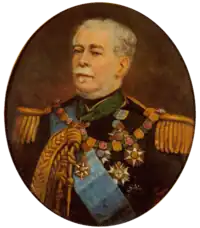 The Duke of Caxias wearing the collar and insignia of the Order and other orders and decorations
The Duke of Caxias wearing the collar and insignia of the Order and other orders and decorations.jpg.webp) Emperor Pedro II wearing the collar of the order and elements of the Imperial Regalia. Detail from a portrait by Pedro Américo
Emperor Pedro II wearing the collar of the order and elements of the Imperial Regalia. Detail from a portrait by Pedro Américo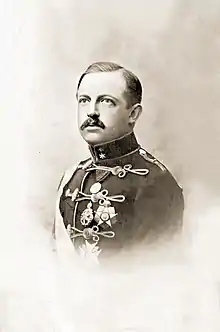 Prince Luís of Orléans-Braganza wearing the insignia of the order and other orders and decorations
Prince Luís of Orléans-Braganza wearing the insignia of the order and other orders and decorations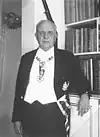 Prince Pedro Henrique of Orléans-Braganza, then Head of the Imperial House of Brazil wearing the collar of the order and other decorations
Prince Pedro Henrique of Orléans-Braganza, then Head of the Imperial House of Brazil wearing the collar of the order and other decorations_-_Fram_Museum.jpg.webp) Details of the insignia
Details of the insignia Coat of arms of Isabel, Princess Imperial
Coat of arms of Isabel, Princess Imperial
Recipients
.svg.png.webp) Afonso, Prince Imperial of Brazil
Afonso, Prince Imperial of Brazil.svg.png.webp) Alexander, Crown Prince of Yugoslavia
Alexander, Crown Prince of Yugoslavia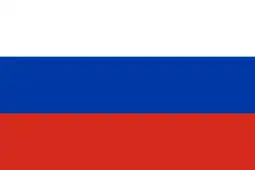 Grand Duke Alexei Alexandrovich of Russia
Grand Duke Alexei Alexandrovich of Russia.svg.png.webp) José Ferraz de Almeida Júnior
José Ferraz de Almeida Júnior.svg.png.webp) Luís Alves de Lima e Silva, Duke of Caxias
Luís Alves de Lima e Silva, Duke of Caxias.svg.png.webp) Amélie of Leuchtenberg
Amélie of Leuchtenberg.svg.png.webp) Prince Antônio Gastão of Orléans-Braganza
Prince Antônio Gastão of Orléans-Braganza.svg.png.webp) Prince August Leopold of Saxe-Coburg and Gotha
Prince August Leopold of Saxe-Coburg and Gotha.svg.png.webp) José Luís Mena Barreto
José Luís Mena Barreto Henry Walter Bates
Henry Walter Bates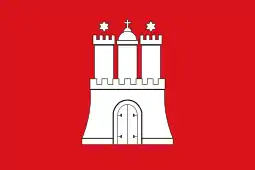 Emil Bauch
Emil Bauch John Bramley-Moore
John Bramley-Moore James Brunlees
James Brunlees_crowned.svg.png.webp) Ernesto Burzagli
Ernesto Burzagli.svg.png.webp) Louis Buvelot
Louis Buvelot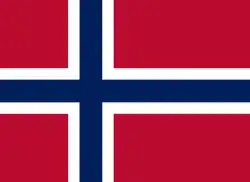 Peter Christophersen
Peter Christophersen.svg.png.webp) Jules d'Anethan
Jules d'Anethan Warren De la Rue
Warren De la Rue.svg.png.webp) Rudolf von Delbrück
Rudolf von Delbrück John Hay Drummond Hay
John Hay Drummond Hay.svg.png.webp) Ferdinand II of Portugal
Ferdinand II of Portugal.svg.png.webp) Antônio Ferreira Viçoso
Antônio Ferreira Viçoso Marcos Christino Fioravanti
Marcos Christino Fioravanti.svg.png.webp) Princess Francisca of Brazil
Princess Francisca of Brazil.svg.png.webp) Annibale de Gasparis
Annibale de Gasparis Gaston, Count of Eu
Gaston, Count of Eu Friedrich Heinrich Geffcken
Friedrich Heinrich Geffcken.svg.png.webp) Antônio Carlos Gomes
Antônio Carlos Gomes.svg.png.webp) Gaspare Gorresio
Gaspare Gorresio John Pascoe Grenfell
John Pascoe Grenfell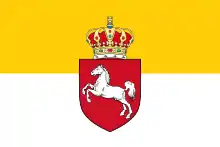 Heinrich Halfeld
Heinrich Halfeld.svg.png.webp) Joaquim José Inácio, Viscount of Inhaúma
Joaquim José Inácio, Viscount of Inhaúma.svg.png.webp) Isabel, Princess Imperial of Brazil
Isabel, Princess Imperial of Brazil William Thomson, 1st Baron Kelvin
William Thomson, 1st Baron Kelvin.svg.png.webp) Princess Leopoldina of Brazil
Princess Leopoldina of Brazil.svg.png.webp) Prince Ludwig August of Saxe-Coburg and Gotha
Prince Ludwig August of Saxe-Coburg and Gotha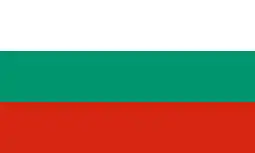 Ferdinand I of Bulgaria
Ferdinand I of Bulgaria.svg.png.webp) Luís I of Portugal
Luís I of Portugal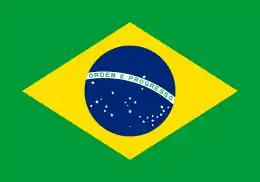 Prince Luiz of Orléans-Braganza
Prince Luiz of Orléans-Braganza Joseph Luns
Joseph Luns.svg.png.webp) Machado de Assis
Machado de Assis.svg.png.webp) Gonçalves de Magalhães, Viscount of Araguaia
Gonçalves de Magalhães, Viscount of Araguaia.svg.png.webp) Manuel Antônio Farinha
Manuel Antônio Farinha.svg.png.webp) Princess Maria Amélia of Brazil
Princess Maria Amélia of Brazil Clements Markham
Clements Markham.svg.png.webp) Victor Meirelles
Victor Meirelles.svg.png.webp) Cândido Mendes de Almeida
Cândido Mendes de Almeida John Miers (botanist)
John Miers (botanist).svg.png.webp) Ângelo Moniz da Silva Ferraz, Baron Uruguaiana
Ângelo Moniz da Silva Ferraz, Baron Uruguaiana.svg.png.webp) Firmino Monteiro
Firmino Monteiro.svg.png.webp) Carlos de Morais Camisão
Carlos de Morais Camisão Robert Stirling Newall
Robert Stirling Newall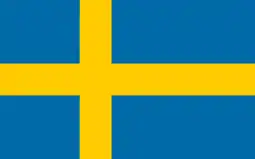 Alfred Nobel
Alfred Nobel Sir Andrew Noble, 1st Baronet
Sir Andrew Noble, 1st Baronet George O'Kelly
George O'Kelly Joseph O'Kelly
Joseph O'Kelly Olav V of Norway
Olav V of Norway.svg.png.webp) Henrique O'Neill, 1st Viscount of Santa Mónica
Henrique O'Neill, 1st Viscount of Santa Mónica.svg.png.webp) Jorge Torlades O'Neill I
Jorge Torlades O'Neill I Prince Bertrand of Orléans-Braganza
Prince Bertrand of Orléans-Braganza.svg.png.webp) Honório Hermeto Carneiro Leão, Marquis of Paraná
Honório Hermeto Carneiro Leão, Marquis of Paraná.svg.png.webp) José Paranhos, Viscount of Rio Branco
José Paranhos, Viscount of Rio Branco Louis Pasteur
Louis Pasteur.svg.png.webp) Pedro I of Brazil
Pedro I of Brazil.svg.png.webp) Pedro II of Brazil
Pedro II of Brazil.svg.png.webp) Prince Pedro Augusto of Saxe-Coburg and Gotha
Prince Pedro Augusto of Saxe-Coburg and Gotha Pedro Carlos of Orléans-Braganza
Pedro Carlos of Orléans-Braganza Prince Pedro Gastão of Orléans-Braganza
Prince Pedro Gastão of Orléans-Braganza Prince Pedro Luiz of Orléans-Braganza
Prince Pedro Luiz of Orléans-Braganza.svg.png.webp) Manuel de Araújo Porto-Alegre, Baron of Santo Ângelo
Manuel de Araújo Porto-Alegre, Baron of Santo Ângelo.svg.png.webp) James-Ferdinand de Pury
James-Ferdinand de Pury.svg.png.webp) Antônio Ricardo dos Santos
Antônio Ricardo dos Santos.svg.png.webp) Manuel Silvela y Le Vielleuze
Manuel Silvela y Le Vielleuze.svg.png.webp) Lafayette Rodrigues Pereira
Lafayette Rodrigues Pereira.svg.png.webp) Pedro Luís Pereira de Sousa
Pedro Luís Pereira de Sousa.svg.png.webp) Maximilian von Speidel
Maximilian von Speidel.svg.png.webp) Félix Taunay, Baron of Taunay
Félix Taunay, Baron of Taunay.svg.png.webp) Charles d'Ursel
Charles d'Ursel.svg.png.webp) Louis van Houtte
Louis van Houtte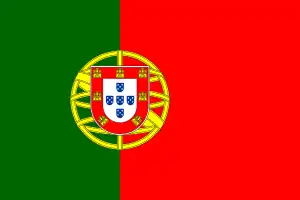 Duarte Pio, Duke of Braganza
Duarte Pio, Duke of Braganza Afonso, Prince of Beira[2]
Afonso, Prince of Beira[2]
External links
- Original appointment to the Order of the Rose signed by Emperor Dom Pedro II, 1887 - Arquivo Público do Estado de São Paulo
References
- ↑ Register of Orders of Chivalry. ISBN 979-12-20389-43-3 © 2022 International Commission for Orders of Chivalry (Commissione Internazionale permanente per lo studio degli Ordini Cavallereschi), p. 40
- ↑ "Comunicado: A propósito das ordens imperiais brasileiras". 8 February 2022. Retrieved 18 July 2022.
.svg.png.webp)